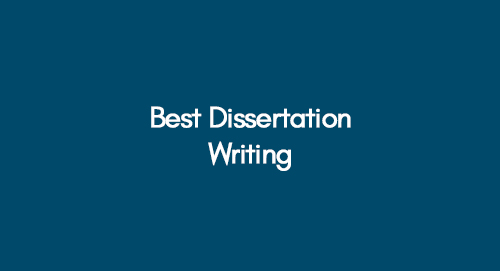
What is the Best Dissertation Writing? | Tips and Examples
January 4, 2023
How to Write a Dissertation in a Week? | Key Steps and Helpful Tips
January 4, 2023Starting to write a dissertation can be a mix of excitement and challenge. To make sure all your efforts lead to a strong result, it's important to learn how to organize your dissertation properly.
Explore the Essential Steps to Help You Create a Well-Structured Dissertation
Whether you're in grad school or doing research, these tips will really help you in your academic work. Let's jump right in and discover the key to getting the most out of your dissertation. Learn the secrets of writing well in academics as we explore how to structure a dissertation in our detailed blog post.
Essential Components in Structuring a Dissertation
Before delving into the optimal dissertation structure, it's crucial to familiarize yourself with the fundamental components that make up a dissertation.
Introduction
Your dissertation introduction should provide a brief overview of your research topic, goals, and methodology. Keep it concise since the bulk of your dissertation will focus on your findings.
Literature Review
In a dissertation, the literature review holds great importance. It examines previous research on your topic and helps position your own research in its broader context. This section can be quite lengthy, so it is essential to be selective in what you include. Be sure to discuss any gaps in the literature and how your research aims to fill these gaps.
Methodology
In the methodology, explain how you conducted your research, including participant details, data collection, and analysis methods. It is crucial to be clear and concise in this section, as you will need to justify your choices to convince the reader that your methodology is sound.
Results
In the results section, present your research findings clearly and briefly. Include both quantitative and qualitative data, along with any necessary tables or figures. If your results are not significant, explain possible reasons for this outcome.
Discussion
The discussion section interprets your study's results, contextualizes them, acknowledges limitations, and proposes future research. Ensure a clear connection between your findings, literature review, and methodology for reader understanding.
Conclusion
The conclusion must recap your dissertation's main points and highlight the implications or practical uses of your discoveries. It's not the place for introducing new information or concepts, so keep it concise and aligned with the paper's prior discussions.
References
The references section should include all the sources you consulted during your research, including both primary and secondary sources.
How to Structure Your Dissertation for Maximum Impact
The following keynotes explain how to structure your dissertation optimally.
Outline Creation
The first step in creating a successful dissertation is creating an outline. Outlines are critical for keeping track of your ideas and forming them into a cohesive argument.
Start your outline with an introductory section, outlining the key topics for each paper section. Follow with body paragraphs that correspond to the introduction's topics.
Conclude with a summary of your paper's main points. Incorporating citations in your outline, if needed, can enhance organization and save time during the final draft process.
Organization and Flow
Once you've completed your outline, it’s time to begin structuring the dissertation itself. To ensure that everything flows smoothly from one point to another, ensure each sentence relates directly to the topic.
Learn How to Keep Readers Engaged without Getting Lost
Use transition words such as “however” or “therefore” throughout the paper to make subtle connections between sentences or sections of text without explicitly stating them in every instance.
Proofreading & Editing
After compiling our ideas into a unified document, proofreading is crucial before submission. Grammatical errors can affect our reception by professors and peers. Ensuring a professional appearance is essential. Consider having an outsider review your work for clarity, even if they lack dissertation experience.
How to Craft a Successful Dissertation
Crafting a successful dissertation requires a strong grip on referencing and citation styles and subject-related expertise. From outline to a conclusion, everything needs to fit in place like a piece of a puzzle.
Consider Best dissertation writing tips and examples for successful dissertation.
Outline Your Argument
Creating an outline before you start writing is essential to ensure that your thoughts are organized and that you get all the important points.
Explore How Outline Helps to Keep the Track All of Your Ideas
Start by jotting down every key point you need to include in your paper—introduction, literature review, methodology, results, conclusion—and then break each of those sections down further into specific topics.
Organize Your Ideas
After outlining your argument, organize your points logically to create a coherent narrative.
Learn More about How to Create a Flow Naturally in the Narrative
Ensure each idea contributes to the story you're telling in your dissertation. Pay attention to the connections between different sections to maintain reader clarity. Remove or reorganize any content that disrupts the narrative flow.
Make Connections
The best dissertations draw connections between different ideas and use those connections as evidence in support of their arguments.
Learn More about How Evidence Support Your Argument as a Whole
Make sure you include enough evidence from both primary sources (e.g., interviews with experts) and secondary sources (e.g., scholarly articles) so that readers can see how each point contributes to your main thesis statement or conclusion.
Conclusion
A well-crafted dissertation should be easy for readers to follow and clearly show how all the pieces fit together to support your main argument or thesis statement. Outline your argument, organize ideas coherently, and ensure logical connections. This creates a powerful dissertation structure for maximum reader clarity.
You may Contact Premier Dissertations for all your dissertation-related needs and queries.
Moreover, the following resources will serve as beacons in creating well-structured dissertation.
Get 3+ Free Dissertation Topics within 24 hours?



























